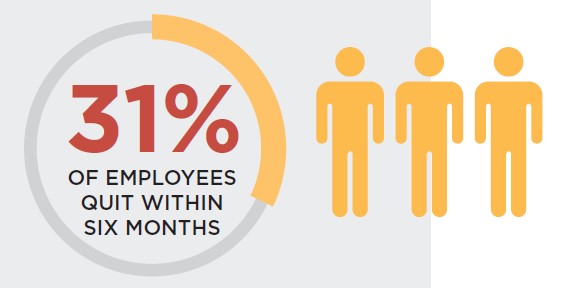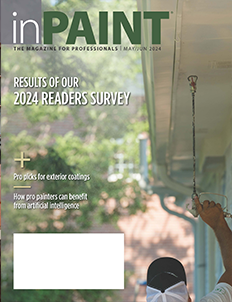Onboarding with intention
 Most business owners recognize that the onboarding stage is an important part of the hiring process, but many still underestimate how important it is to do it right.
Most business owners recognize that the onboarding stage is an important part of the hiring process, but many still underestimate how important it is to do it right.
FIRST IMPRESSIONS MATTER
A recent survey conducted by the Harvard Business Review found that helping new hires make connections within the organization early on is critical.
Specifically, the survey found that new employees who had one-on-one meetings with their manager in their first week were more successful than those who didn’t. According to the researchers, that connection helps establish a sense of belonging and can influence a new hire’s decision to stay.
Jess Bjorling at BambooHR, a human resource software provider, couldn’t agree more.
“The goal of the first day should be to reassure new employees that they’ve made the right choice,” says the HR generalist & benefits specialist. “In our own onboarding, we make sure the focus is about making the employee feel welcome. We provide one-on-one time with their manager and team members, reinforcing throughout that we hired them because we know that they have a lot to offer and will provide great value.”
One way BambooHR helps keep the focus of the first day on the new hire and their fit within the company is by enabling them to complete as much necessary paperwork as possible in advance. “Not only does this make the first day more engaging, it also gives us reason to stay in touch with them between the offer point and the time they start. This helps build the sense of belonging before they even arrive,” says Bjorling.
ONBOARDING AS PART OF A RETENTION STRATEGY
Justin Wilkins, VP at Kimmel & Associates, the country’s largest recruiting firm with a specialization in construction, sees value to onboarding that goes beyond the first-day feel-goods.
According to Wilkins, “The research states that 31% of employees will quit within the first six months. I’d actually argue they’ll quit within 90 days. But with a solid onboarding program, you can buck that trend if you recognize and invest in it as a critical part of your retention strategy. A good program doesn’t take that much effort to execute, but a bad one can cost you good employees and even your reputation in the field.”
Lest business owners think onboarding is strictly for newbies, Wilkins reminds them that, “Even the most seasoned pro making a lateral move needs guidance. Just because it’s the same title doesn’t mean things are done the same way. Change is stressful. If you don’t let that person know you’ve got their back and are there to support them, you could let some experienced talent slip away.”
ONE PRO’S APPROACH
Nick Slavik of Nick Slavik Painting & Restoration Co. in New Prague, MN recently fine-tuned his onboarding process to focus, first, on building relationships and, second, on teaching skills.
“On an employee’s first day, they attend our weekly company meeting. This exposes them to the company culture and brings them into the fold,” says Slavik. “We talk about projects, personal issues, etc. At the close of that meeting, I pair them with one of our senior craftspeople who provides the formal safety training and then mentors them in the weeks that follow. During the first week, and every week thereafter, I’ll connect with them on the jobsite at least once or twice. And it’s not just a ‘how are you?’ I work side by side with them, sometimes offer high-level training, and connect through conversation and interaction.”
In addition, new employees receive an apprentice handbook on the first day that outlines company policies related to everything from cell phones and core values to employee vehicles and how to get a raise.
Slavik admits that it took more than a bit of effort to put all the pieces in place for the new approach but when asked how it has impacted retention and morale, he says, “It’s night and day. All employees want structure and we’ve given them that. Retention has definitely improved and morale has never been higher.”




